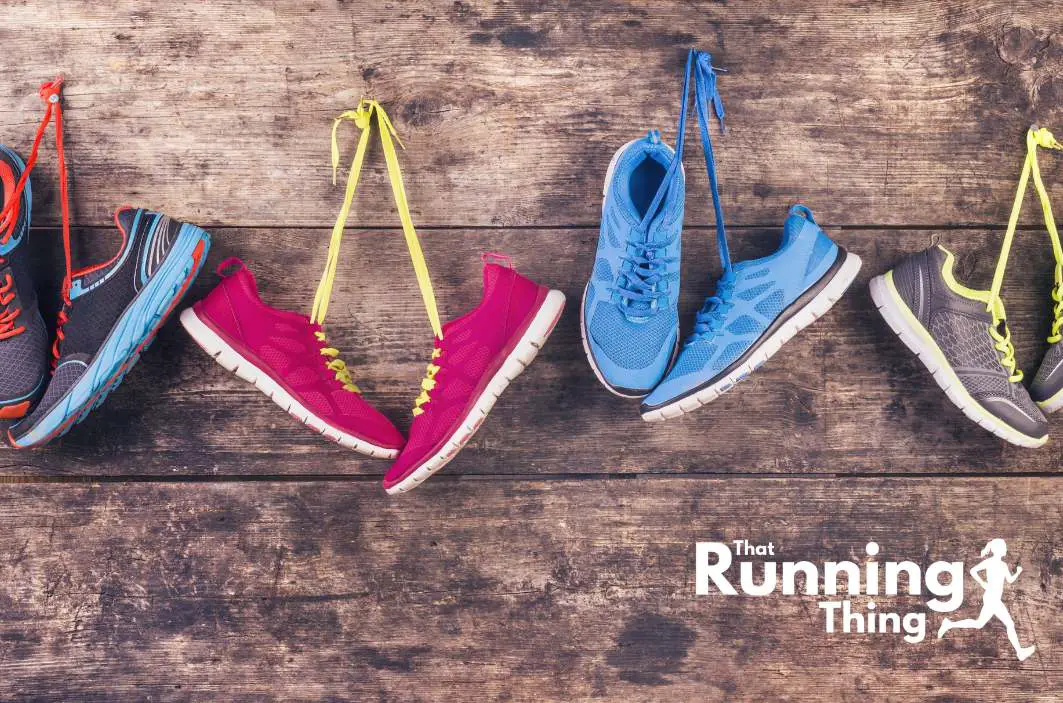Like me, you may think of buying an extra pair of shoes as a new one to use after the old ones wear out.
I once saw an offer so good in my local running shop that was so good I had to buy two pairs as I thought the price would never be repeated, and it was my favourite brand of running shoes.
So I left one pair in my wardrobe for future use…
However, you may have heard how running shoes have a shelf life and wondered if it would make sense to do this.
What happens if you won’t use them? Do running shoes have a shelf life?
Most running shoes will last three to five years since the materials break down slowly. Running shoes will wear out over time even if you don’t wear them, and you may want to start wearing them right away or at least after six to 12 months to get the most from your investment.
Even without use, running shoes will break down little by little. Now, if you’d like to learn more about the shelf life of running shoes, keep reading.
The heat and humidity will slowly damage the running shoes because the adhesives break down faster, and the foam softens. Once humidity enters the shoe, it will start to break down the shoe over time from a buildup of moisture in the shoe.
Cushioning in the shoe especially breaks down quickly since it becomes increasingly brittle—I would say that the cushioning breaks down the fastest. How long the shoe lasts will depend on the quality and brand of the running shoe.
Still, buying extra pairs of running shoes that will serve as a backup makes little sense. The shoes will break down as you wear the other ones, and you won’t receive the biggest return on investment.
The glue, the rubber and the insole will all expire after some time, but they will expire at different points as separate components. Even putting on a shoe like this, you can tell that it doesn’t wear as well as a new pair.
What Does the Running Shoe Feel Like over Time after Not Being Used?
The biggest thing isn’t necessarily that the running shoe will fall apart when you go to put it on. Instead, it won’t feel like a new pair of running shoes despite you having never worn them.
The shoe material will feel stiffer and the cushioning won’t feel as soft. While you can still use it, you wouldn’t call it getting the most out of the shoes because they won’t feel the same compared to a new pair.
Most manufacturers say that a new pair of running shoes will last anywhere from 300 to 500 miles. Shoes that have sat on a shelf for a couple of years, however, may last 150 to 250 miles. You don’t see as big of a return. Like any other shoe, maybe you could wear them past that point, but the risk of an injury increases.
Beware of Discount Running Shoes
Getting a good price on a discounted pair of running shoes may seem like a great deal at the outset. However, if the running shoes have sat in the warehouse for over six months, and the merchant simply discounted them to get rid of them faster, you may see fewer miles from your running shoes since the same rule applies.
They won’t give you the same return on investment. When you can get them at the right price, it may still make sense to buy them. In general, I would recommend against it since they won’t last the full 300 to 500 miles.
Think of Storage Conditions: Don’t Store Them in the Garage
Maybe you bought a new pair of running shoes and thought to store them in the garage. The shelf life of your running shoes will lessen because you want to keep your shoes stored in a climate-controlled area. Too much heat or too much cold will break down the materials sooner than you can wear them.
Indoors in a climate-controlled room with less humidity will do the trick. Even still, your running shoes will continue to break down if you don’t use them. I recommend that you wrap it in plastic to make it airtight to further prevent the breakdown of the shoes. Good storage is essential to making them last longer.
The conditions that you store them in will determine how long they last and how much they break down before you can use them.
How to Store Running Shoes
While not recommended, if you do plan to store running shoes, I have a few tips that will help them to last longer. First, store the shoes in a cool, dark location between 50 to 80 degrees Fahrenheit. I would recommend 70 degrees as the most ideal temperature. Stuff paper inside the shoes to prevent moisture from ruining the glues. You can use old newspapers.
Too cold, and your midsole or the cushioning will harden and grow brittle. It won’t feel as soft when you wear it later. Storing them away in a closet will usually make the most sense. You might keep a dehumidifier in the room to eliminate moisture from the room.
Running Shoe Companies Don’t Recommend Storing Shoes
Companies like Asics and New Balance openly advise against storing shoes away for any length of time since the materials will degrade before you can use them. At the least, you shouldn’t judge a brand of shoes for their quality if you follow this practice.
The adhesives that hold the shoes together will start to deteriorate, which is the biggest issue with buying shoes to store them away. They recommend that you only buy running shoes when you plan to use them.
What happens if you have a second pair of shoes? Instead of simply storing them away, you can cycle between the pairs of running shoes that you have. Some runners do this to train and strengthen their foot and leg muscles since both pairs will feel different on the feet. This makes more sense than buying a pair that you won’t use until the other ones wear out.
What if I Never Wear Them? Would They Go Bad on Their Own?
They won’t become completely unusable right away, but you won’t feel the freshness of the shoes when you put them on. No matter how expensive a shoe that you buy, it will still break down over time even if not used.
Given enough years, the running shoe may eventually become entirely unusable. It won’t happen after a year, but when you go to put it on five or seven years later, they won’t stand up to the impact from running.
Running shoes need to hold out against slamming the concrete over and over. Older shoes won’t have as strong of glue to hold up against the demands.
How long do running shoes last if you don’t wear them?
Running shoes will last anywhere from three to five years before they start to deteriorate to the point where you can’t use them. After that point, using them becomes much harder, and they won’t last as long compared to fresh shoes.
Do shoes deteriorate in the box?
Even in the box, moisture can enter the shoes and compromise the integrity of them. One of the reasons that you find paper in shoes is to prevent moisture from getting into the shoe and reducing its quality and lifespan.
Do shoes go bad if you don’t wear them?
Even unworn, all shoes will go bad given enough time since the adhesives weren’t meant to last forever. How long the shoes last will depend on the brand, but even the most expensive shoes will deteriorate over time.
Do running shoes expire?
Running shoes will expire after three to five years since the materials in the shoes break down after a while. They may not be completely unusable, but when you go running in them, the materials will fall apart faster than a new pair. Some manufacturers even advise against storing running shoes.
Final Thoughts
In most cases, it makes little sense to buy an extra pair of running shoes that you won’t use since you won’t make the most out of the quality. You might cycle through a couple of pairs, however, and many runners have done this.
For a good pair of running shoes for men, I recommend the Men’s Air Zoom Pegasus 36, and for women, I recommend the Nike Women’s Free RN Flyknit.


